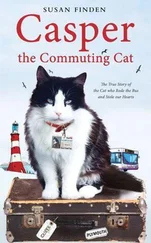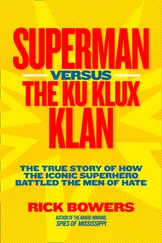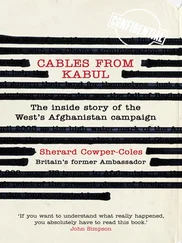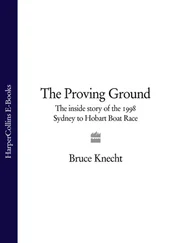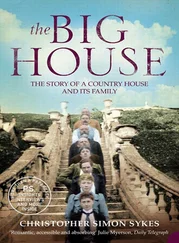Andrew Sorkin - Too Big to Fail - The Inside Story of How Wall Street and Washington Fought to Save the FinancialSystem--and Themselves
Здесь есть возможность читать онлайн «Andrew Sorkin - Too Big to Fail - The Inside Story of How Wall Street and Washington Fought to Save the FinancialSystem--and Themselves» весь текст электронной книги совершенно бесплатно (целиком полную версию без сокращений). В некоторых случаях можно слушать аудио, скачать через торрент в формате fb2 и присутствует краткое содержание. Жанр: Старинная литература, на английском языке. Описание произведения, (предисловие) а так же отзывы посетителей доступны на портале библиотеки ЛибКат.
- Название:Too Big to Fail: The Inside Story of How Wall Street and Washington Fought to Save the FinancialSystem--and Themselves
- Автор:
- Жанр:
- Год:неизвестен
- ISBN:нет данных
- Рейтинг книги:4 / 5. Голосов: 1
-
Избранное:Добавить в избранное
- Отзывы:
-
Ваша оценка:
- 80
- 1
- 2
- 3
- 4
- 5
Too Big to Fail: The Inside Story of How Wall Street and Washington Fought to Save the FinancialSystem--and Themselves: краткое содержание, описание и аннотация
Предлагаем к чтению аннотацию, описание, краткое содержание или предисловие (зависит от того, что написал сам автор книги «Too Big to Fail: The Inside Story of How Wall Street and Washington Fought to Save the FinancialSystem--and Themselves»). Если вы не нашли необходимую информацию о книге — напишите в комментариях, мы постараемся отыскать её.
Too Big to Fail: The Inside Story of How Wall Street and Washington Fought to Save the FinancialSystem--and Themselves — читать онлайн бесплатно полную книгу (весь текст) целиком
Ниже представлен текст книги, разбитый по страницам. Система сохранения места последней прочитанной страницы, позволяет с удобством читать онлайн бесплатно книгу «Too Big to Fail: The Inside Story of How Wall Street and Washington Fought to Save the FinancialSystem--and Themselves», без необходимости каждый раз заново искать на чём Вы остановились. Поставьте закладку, и сможете в любой момент перейти на страницу, на которой закончили чтение.
Интервал:
Закладка:
One additional condition came with the appointment: Paulson would have to divest his huge holding of Goldman Sachs stock—some 3.23 million shares, worth about $485 million—as well as a lucrative investment in a Goldman fund that held a stake in the Industrial and Commercial Bank of China. Because new Internal Revenue Service rules allowed executives who entered into government service to sell their interests without a penalty, Paulson saved more than $100 million in taxes. It was perhaps one of the most lucrative deals he ever struck, but for many months prior to the crisis, he watched chagrined as Goldman’s shares rose from about $142, when he sold them, to their high of $235.92 in October 2007.
Henry Merritt Paulson Jr. was officially nominated for Treasury secretary on May 30, 2006. Just seven days later, the Washington Post featured a profile of him that opened: “In an administration with just two and a half years to go, Henry M. Paulson Jr., President Bush’s nominee for Treasury secretary, may have little chance to make a mark on many economic issues.”
Nothing could have played more effectively to his immediate sense of buyer’s remorse—and motivated him to overcome the challenge.

By Wall Street standards, Paulson was something of a baffling outlier, a titan who had little interest in living a Carnegie Hill multimillionaire’s life. A straight-shooting Midwesterner, he had grown up on a farm outside Chicago and had been an Eagle Scout. He and Wendy assiduously avoided the Manhattan society scene, trying to get to bed before 9:00 p.m. as often as they could, and preferred bird-watching in Central Park—Wendy led tours in the mornings for the Nature Conservancy—near their two-bedroom, twelve-hundred-square-foot apartment, a modest residence for one of the highest-paid executives on Wall Street. Paulson wore a plastic running watch, and any inclination he might have had to spend money was discouraged by Wendy, the daughter of a Marine officer whose frugality had kept him firmly grounded. One day, Paulson came home with a new cashmere coat from Bergdorf Goodman, to replace one that he had had for ten years. “Why did you buy a new coat?” Wendy asked. The next day, Paulson returned it.
And despite his prodigious fund-raising for President Bush, he hardly fit the image of a Republican hard-liner. A hard-core environmentalist whose only car was a Toyota Prius, he was the subject of a good deal of negative publicity—and the scourge of some annoyed Goldman Sachs shareholders—when in 2006 he donated 680,000 acres of land Goldman owned in the South American archipelago of Tierra del Fuego to the Wild-life Conservation Society. As it happened, his son was on the society’s board of advisers. Although the irony could not be appreciated by anyone at the time, the firm had acquired the ecologically sensitive South American land as part of a portfolio of mortgage defaults.
Paulson had a long history of exceeding others’ expectations. Despite his relatively modest frame—six feet one, 195 pounds—he had been an all-Ivy League tackle for Dartmouth, where his ferociousness in playing earned him the nicknames “The Hammer” and “Hammering Hank.” But unlike his hard-partying teammates, he kept orange juice and ginger ale in a refrigerator at his fraternity, Sigma Alpha Epsilon, to drink during beer parties. (He met his future wife on a blind date when she was a student at Wellesley; Wendy’s classmates there included Hillary Rodham, who in some ways was her rival. Wendy was president of the class of 1969; Hillary was president of the student body.) Paulson graduated Phi Beta Kappa from Dartmouth in 1968 with a major in English literature.
Paulson had first come to Washington in 1970, after graduating from Harvard Business School, and at the time he didn’t even own a suit. Armed with a recommendation from one of his undergraduate professors at Dartmouth, Paulson landed a job as a staff aide to the assistant secretary of Defense and would soon display some of the skills that would later make him such an effective salesman at Goldman Sachs. In just two years he advanced to the White House, where he became assistant director of the Domestic Policy Council, then headed by John Ehrlichman, who would later be convicted of conspiracy, obstruction of justice, and perjury in the Watergate cover-up. Paulson served as a liaison with the departments of Treasury and Commerce. “Given how [Hank] moved from a low-ranking position in the Pentagon to the White House, you have to conclude he’s got pretty good antenna for what’s going on,” recalled a friend and former Goldman executive, Kenneth Brody. “[B]ut when Watergate came, there was never a mention of Hank.”
When Wendy became pregnant with their first child in 1973, Paulson, eager to earn some money, decided to leave the Nixon White House and started looking for work in the financial sector—but not if it meant living in New York. He interviewed with a number of financial firms in Chicago, and of all the offers he received, he was most attracted to two Manhattan firms with major Chicago offices: Salomon Brothers and Goldman Sachs. He decided on Goldman after Robert Rubin, a Goldman partner and future Treasury secretary, Gus Levy, a legend at the firm, and John Whitehead, among others, convinced him that he could be successful there and never have to live in Gotham. His salary: $30,000.
In January 1974, Paulson moved his family back to where he had grown up, Barrington Hills, a town of fewer than four thousand residents northwest of Chicago. Paulson bought five acres of the family farm from his father, who was a wholesale jeweler. There, up a winding road from his parents’ home, he built an unpretentious wood-and-glass house, nestled among tall oak trees at the end of a half-mile driveway.
At Goldman, Paulson was given an unusual amount of responsibility for a junior investment banker. “You know, Hank, we ordinarily don’t hire guys as young as you into this role but, you know, you look old,” Jim Gorter, a senior partner, told him, referring to his rapidly receding hairline. Having quickly proved himself with important Midwestern clients like Sears and Caterpillar, he was soon marked as a rising star at the firm’s Manhattan headquarters. In 1982 he made partner, placing him in an elite group of men and a few women who were entitled to share directly in the firm’s profits. When he became co-head of investment banking and a member of the firm’s management committee from Chicago, he was obliged to spend a great deal of time on the phone, which he did somewhat famously, leaving interminable messages at all hours of the day.
Only four years later, in September of 1994, however, Goldman Sachs was in turmoil. An unexpected spike in interest rates around the world had hit the firm hard, sending profits tumbling more than 60 percent during the first half of the year. Stephen Friedman, the firm’s chief executive, suddenly announced he was resigning; thirty-six other Goldman partners soon left, along with their capital and connections.
To stanch the bleeding, the firm’s board turned to Jon Corzine, Goldman’s soft-spoken head of fixed income. The directors saw Paulson as a natural number two who would not only complement Corzine but send a signal that investment banking, Paulson’s specialty, would remain as key an area as ever for Goldman. They were betting that Corzine and Paulson could form a partnership as powerful as that of Friedman and Robert Rubin, and before them, John Whitehead and John Weinberg.
There was only one problem with the plan: Neither man cared much for the other.
Читать дальшеИнтервал:
Закладка:
Похожие книги на «Too Big to Fail: The Inside Story of How Wall Street and Washington Fought to Save the FinancialSystem--and Themselves»
Представляем Вашему вниманию похожие книги на «Too Big to Fail: The Inside Story of How Wall Street and Washington Fought to Save the FinancialSystem--and Themselves» списком для выбора. Мы отобрали схожую по названию и смыслу литературу в надежде предоставить читателям больше вариантов отыскать новые, интересные, ещё непрочитанные произведения.
Обсуждение, отзывы о книге «Too Big to Fail: The Inside Story of How Wall Street and Washington Fought to Save the FinancialSystem--and Themselves» и просто собственные мнения читателей. Оставьте ваши комментарии, напишите, что Вы думаете о произведении, его смысле или главных героях. Укажите что конкретно понравилось, а что нет, и почему Вы так считаете.



